Business Industry Capital


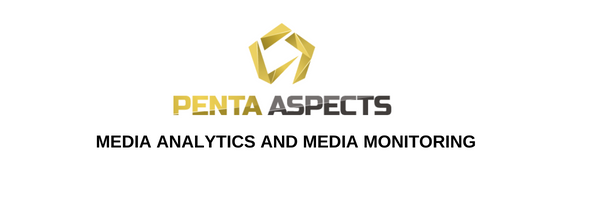

|
Bulgaria
|
|  | |
|
BNB Exchange Rates
(18.12.2025) |
|---|
| |
EUR |
|
1.95583 |
|
| GBP |
|
2.22633 |
| USD |
|
1.66851 |
| CHF |
|
2.09583 |
| EUR/USD |
|
1.1722* |
|
ECB exchange rate |
|
Basic Interest Rate |
| |
as of 01.12 |
|
1.81% |
|
|
|
 |
Financial news |
 |
The Harmonized Index of Consumer Prices in Bulgaria in November 2025 was 3.7 percent, which is a slight decrease compared to 3.8 percent in October and an acceleration compared to 2 percent in November 2024. This is shown by data from the European statistical agency Eurostat. In the European Union, annual inflation in November 2025 was 2.4 percent, which is a decrease compared to 2.5 percent in October. In the euro area, the indicator remained unchanged compared to the previous month at a level of 2.1 percent. A year earlier – in November 2024 – inflation was 2.5 percent in the EU and 2.2 percent in the euro area. The lowest inflation levels in November 2025 were recorded in Cyprus (0.1 percent), France (0.8 percent) and Italy (1.1 percent). The highest levels were recorded in Romania (8.6%), Estonia (4.7%) and Croatia (4.3%). Compared with October 2025, annual inflation fell in 12 Member States, remained unchanged in five and increased in ten. By component, the largest contribution to annual inflation in the euro area in November came from services (+1.58 percentage points), followed by food, alcohol and tobacco (+0.46 percentage points), non-energy industrial goods (+0.14 percentage points), while energy made a negative contribution (-0.04 percentage points). Source: BTA
For the modernization of production, introduction of new technologies and equipment, digitalization and ICT solutions, micro, small and medium-sized enterprises from Bulgaria and Serbia will be able to rely on financing between 100,000 and 400,000 euros for a joint investment project. Each partner will be able to rely on financing between 50,000 and 200,000 euros. Further investments will be supported to increase quality and competitiveness, expand capacity and participate in value-added chains. The funds are provided under the second call for project proposals for small and medium-sized enterprises under Priority 1 "Competitive Border Region" of the Cross-Border Cooperation Program between Bulgaria and Serbia. It is open for applications until March 31, 2026, and proposals are submitted electronically through the JEMS system. At least 60% of the project budget must be for investments aimed at the above-listed areas. The projects themselves have a duration of between 12 and 24 months. The European grant is 85%. Co-financing is 15%, with the Bulgarian partners provided by the state budget, and the Serbian partners - their own contribution. The advance payment is 10% of the total subsidy. It is required that the enterprises are registered and/or actually carry out activities in the eligible cross-border territory. For Bulgaria, these are the districts of Vidin, Vratsa, Montana, Kyustendil, Pernik and Sofia-region, and for Serbia - Niš, Zajčar, Pirot, Toplica, Yablanica, Pčinja and Bor. In addition, they must operate in the eligible economic sectors: C - Manufacturing (C.10,11 C.13-C.33); E - Waste Management (E.38.11,E.38.32, E.38.21, E.39); J - Information and Communications (J.58,J.59); K – Telecommunications, computer programming, consultancy, computer infrastructure and other information services (K.60-K.63), N – Professional, scientific and technical activities (N.71, N.72, N.74); I – Hotels and restaurants (all codes); H – Transport and storage (all codes); R – Health and social work (all codes); S – Arts, sports and entertainment activities (all codes, except S92 – Gambling and betting). It is mandatory for each project to have one micro, small or medium-sized enterprise from Bulgaria and one from Serbia. Source: 24 chasa
 |
Companies |
 |
One of the largest construction companies in Bulgaria - "Bitumina GmbH Bulgaria", officially changed ownership in November of this year. The new owner is Viktor Zhelev, son of businessman Veliko Zhelev, who is the official owner of "Hidrostroy", VDH and "Patstroy VDH" with total revenues of over 400 million leva. Until a month ago, "Bitumina GmbH Bulgaria" was owned by Dubai-based HPMC Holdings, and Hugo Caldwell was listed as the ultimate owner. The company has been managed for years by Hristo Atanasov, a municipal councilor from GERB in the Aksakovo municipality, Varna region, who until the end of 2024 was listed as the actual owner of "Bitumina" through the Vienna-based Alpha Bitumina Beteiligung. Now Zhelev Jr. is declaring himself as the ultimate owner of Dubai-based HPMC Holdings. The change in ownership should have gone through the Commission for the Protection of Competition, as Bitumina's turnover exceeds the statutory threshold of 25 million leva. However, such a request for permission has not been submitted and considered. Bitumina GmbH Bulgaria is involved in the implementation of public procurement, mainly in the road sector, and is among the companies that had contracts with the state-owned company Avtomagistrali for Lot 1 of Hemus, which is located between Boaza and Dermantsi, and for which they had received a 5 million leva advance before the end of 2020. A separate company had received payments of as much as 82.8 million leva for the supply of materials for section 8 of Hemus from the state-owned company. The eighth lot in question is not yet under construction, although impressive advances were paid to the company in question at least five years ago. Shortly after these payments, in 2021, Bitumina GmbH Bulgaria also purchased the land in the center of Sofia, on which Teatralna Park Residence, a gated complex next to Zaimov Park, is being built. It also owns the company Bitumina Management, which manages the construction of the complex. In September 2024, Bitumina became the property of Dubai-based HPMC Holdings, and according to the contract in the Commercial Register, the price of the transaction was 1.98 million euros. According to the Dubai register, the holding company was registered in April 2024 with the sole shareholder Viktor Zhelev, and Caldwell is a director. This makes Zhelev the owner of the third largest construction group in Bulgaria after GBS and Trace. In 2024, Bitumina GmbH Bulgaria had 57.5 million leva in revenue, almost 6 million leva in profit and over 130 employees. Shortly after the transfer of over 80 million leva from "Avtomagistrali" - in January 2021, the company bought two land properties and 12 auxiliary buildings in the center of Sofia for a total of 23 million leva, according to data in the Property Register. This is a plot of over 12 acres near the "Zaimov" park - at 2 "Prof. Milko Bichev" Str., which is owned by "Avtotransserviz". Currently, housing is being actively built and sold there. The Teatralna Park Residence project is being built next to the "Zaimov" park on 12 acres on the site of the former garage of the Central Committee of the Bulgarian Communist Party. The company is also participating in the construction of the section of the "Europe" highway between Dragoman and Kalotina together with "Shtrabag". The 2018 contract was concluded for 137.5 million leva, but 51 million leva of indexations were received for the 15 kilometers, bringing it to nearly 190 million leva. "Bitumina" is part of a consortium with a four-year contract for repairs in the Razgrad region under the road maintenance program of the road agency. In a consortium with "Inzhstroyengineering" it is repairing 32 km between the village of Gyulovtsa and the intersection with the I-9 Sunny Beach - Burgas road for 84 million leva. It is also part of the consortium that is building the Elin Pelin - Kostenets railway section for 113 million leva. Westinghouse Electric Company signed seven new Memorandums of Understanding during its third Supplier Symposium in Sofia in November 2025. This brings the total number of Bulgarian suppliers that will be involved in the project to build two new power units - seventh and eighth with AP1000 technology at the Kozloduy NPP site to 36. The new Memoranda of Understanding frame the potential for the supply of various products and services such as valves, electrical equipment, pressure vessels and tanks, and auxiliary equipment. Some of the new local companies that have signed the agreements include: ENEK Consult OOD, Honeywell EOOD, KZU-ZLMK EOOD, Neopet OOD, Tangra-AV OOD and Vaptech AD. Westinghouse continues to expand its supplier network and provide opportunities to participate in projects with AP1000 technology in Europe and around the world. The AP1000 is the only Generation III+ nuclear reactor to enter final commercial operation, using fully passive safety systems, with a modular structural design and the lowest carbon footprint per MWe. Six reactors with AP1000 technology are currently setting operating efficiency records worldwide, with 14 more under construction and an approved project for 5 more units with this technology. Poland and Ukraine have also selected AP1000 technology for new nuclear capacity, and the technology is the subject of interest for deployment at many other sites in Europe, the Middle East and North America. Source: actualno.com
The state allocates funds for financing public municipal infrastructure under the Investment Promotion Act. In this regard, the budget of the Ministry of Innovation and Growth will provide Burgas Municipality with funds in the amount of up to 3,852,321 BGN (including VAT) for the construction of elements of municipal infrastructure. It is being built in connection with the implementation of a certified project by "Vemus Invest" EOOD - Burgas and "M Cable" OOD - Burgas. This involves the construction of a cable production base in Burgas and the expansion of the current cable production by purchasing additional machinery and equipment. The companies' investment in the project amounts to 8 million BGN and it is planned to create 25 new jobs. Both companies have a class "A" certificate under the Investment Promotion Act. Through their investment, "Vemus Invest" and "M Cable" will achieve both an increase in the production capacity of their already established range of products and the expansion of the company's portfolio. "M Cable" is a Bulgarian cable manufacturer that already occupies leading positions in this field. The company has technological know-how in cable production, its production base is in the town of Aytos. The construction of a new and the continuation of the existing technical infrastructure will improve the economic development of the region and will have a favorable impact on attracting new investments. Users of the infrastructure will be the companies "MP Property" (Moto Pfoe), "Toje" EOOD, "Emko G" EOOD, "MD Immobilien" EOOD (Aiko/Momax), "Deva Broadcast" EOOD, "Tropic 2000" EOOD, "Commerce Tony 91" EOOD, "Weiss-Profil" EOOD, "IND Properties" AD (Hyundai), "Ivanovi Plus" EOOD, "Callisto Estates" EOOD and others. Source: Banker
Sofia-based electric vehicle electronics manufacturer Curtis Balkan now has a new American owner after Parker Hannifin Corporation recently acquired Curtis Instruments from Rehlko. As a result of the deal, which is worth about $1 billion and was closed in September, the Bulgarian plant becomes part of the world leader in industrial process control and drive technologies. The reason for the deal is that Curtis' technologies complement those of Parker, which gives both companies an advantage. Curtis produces electronic devices for vehicles that provide ground support for airports, lifting platforms, warehouse equipment, agricultural and construction machinery, as well as golf carts. Following the deal, Curtis becomes part of Parker's Motion Systems Group. The Curtis plant in Bulgaria will be an important part of Parker's global operational network. The new owner has already created a specialized integration team with members from both organizations and a detailed integration plan is currently being implemented. The Bulgarian company was established soon after the changes, initially operating in rented premises, and then building its own factory in the capital. "Curtis - Balkan" produces electronic devices and systems for electric vehicles that do not travel on public roads, transport and warehouse equipment, etc. For 2024, its turnover is 51.6 million leva, down from 64 million leva the previous year. Profit is 4.4 million leva (4.6 million leva for 2023). The company employs 142 people according to APIS data as of September 2025. The Curtis Group has three main production bases - in Puerto Rico, Bulgaria and China, which serve the global market. The company also has four R&D centers - two in the USA and one each in Switzerland and China. Expected sales for 2025 are about 320 million dollars. Parker Hannafin is significantly larger. The group operates in 44 countries and has approximately 58,000 employees worldwide. In 2025, it reports sales of $19.9 billion (1.3% growth year-on-year). The Financial Supervision Commission (FSC) has approved the prospectuses for the initial public offering of three warrant issues of Sopharma AD. The issues consist of 8,985,960 ordinary, dematerialized, registered, freely transferable warrants. Their issue value is BGN 0.27 (EUR 0.14). The minimum success threshold for the warrant issues is 1,797,192. One issue is for 3 years, the other is for 5 years, and the third is for 7 years. One issue entitles the holders to subscribe for shares of the pharmaceutical company at an issue value of BGN 3.60 (EUR 1.84) per issue at a warrant/share conversion ratio of 1:1. The second issue gives the holders the right to subscribe for Sopharma shares at an issue price of BGN 4.56 (EUR 2.33) per share at a ratio of 1:1. The third issue gives the holders the right to subscribe for Sopharma shares at an issue price of BGN 5.70 (EUR 2.91) per share also at a ratio of 1:1. Source: investor.bg
The shareholders of Telematic Interactive Bulgaria AD voted the last interim dividend for this year at an extraordinary general meeting held on December 16, 2025. The dividend is BGN 0.25 per share gross (EUR 0.1278), or a total of just over BGN 3.2 million. The specified amount was calculated taking into account the repurchased 159,664 treasury shares as of December - the date on which the persons entitled to vote at the general meeting were determined. Shareholders with shares registered in the shareholders' book kept by Central Depository AD on the 14th day after the date of the extraordinary general meeting (December 30) will be entitled to receive the dividend. Source: investor.bg
"Real Estate Fund Bulgaria" REIT has repaid BGN 8.5 million of the principal due under a loan for the construction of "Synergy Tower" in "Sofia Tech Park", granted by "Eurobank Bulgaria" AD (Postal Bank). The company has concluded an additional agreement with the bank regarding the early repayment, with all other terms of the loan remaining unchanged, the announcement specifies. The company recently finalized the sale of the "Monsieur Bricolage" store on Tsarigradsko Shosse Blvd. in Sofia. The deal is for EUR 18 million. A preliminary contract has also been concluded for the sale of a regulated land property in the Mladost-4 residential complex in Sofia with an area of 7,570 sq m. for EUR 2.8 million. The shareholders voted at an extraordinary general meeting held on December 16 to pay an interim dividend in the amount of 23 stotinki per share gross. Source: Banker
|
|
Investments
|
|  |
|
|
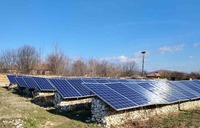 |
 Municipalities: Chirpan, Bratya Daskalovi, Brezovo, Panagyurishte, and Parvomay Municipalities: Chirpan, Bratya Daskalovi, Brezovo, Panagyurishte, and Parvomay
Total area: about 40 decares of owned land in the regions of Plovdiv and Stara Zagora, 29 installed PV plants, each with a capacity of 29,700 Wp, 3 additional properties with development potential
|
 |
 Sofia Center Sofia Center
500 sq.m, functionally distributed between open space area, private offices, meeting room, server room, and restroom
|
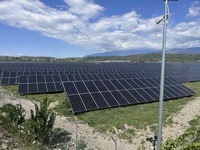 |
 Blagoevgrad Blagoevgrad
111 decares of owned land (in two adjacent plots of 55 decares each) at the entrance of the city from "Struma" highway
|
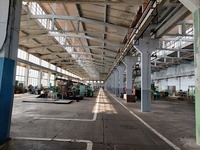 |
 Pleven Region Pleven Region
Total area 34 decares, 2 halls (total area 8510 sq.m) and admin. building (3 floors, GFA 2217 sq.m), operating business, good location, cranes for loading and unloading (lifting capacity 2x1 t, 3, 5, and 12 t), electrical connection - 110/20 kV with two underground 20 kV power lines, substation
|
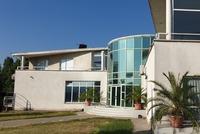 |
 Sofia Sofia
Operating enterprise with excellent financial results, 14.6 decares total area with excellent location, 3 halls (total area 1600 sq.m and height 11 m), cranes for loading and unloading activities (lifting capacity 13 t), admin. building (360 sq.m), warehouses and active store
|
|
|
Bulgarian Industrial Association
|
|  |
|
World
|
|  |
 |
Europe |
 |
The European Commission has announced plans to issue up to €90 billion of EU bonds in the first half of 2026. The issuance will be carried out using a mix of long-term and short-term instruments, and the targets will continue to be communicated every six months "based on evolving financing needs". The proceeds from the European bonds will cover loans to member states under the NextGenerationEU programme, as well as provide funding for the European Union's defence spending plan. The bonds will also finance the Ukraine Facility (the European instrument to provide stable financing to Ukraine through both loans and grants) and various financial assistance programmes for neighbouring countries. Source: economic.bg
The salaries of Belgian MPs will be frozen for the next four years as part of measures to limit budget spending. The decision was taken by the Presidential Council of the Federal Parliament and affects both salaries and the payment of employment benefits. The measure follows an already implemented freeze on ministers' salaries. Currently, Belgian MPs receive around 9,000 euros per month before taxes, as well as nearly 2,600 euros for expenses and benefits at the end of their mandate. The number of federal MPs is 150, and their salaries were capped by 5% last year. Belgian authorities are aiming to reduce budget spending by around 10 billion euros within three years. According to the European Commission, the country is on track to have the largest budget deficit in the eurozone in 2027, and the International Monetary Fund predicts a further deepening of the deficit by 2030 if stricter measures are not taken. Attempts to stabilize public finances have already led to serious social tensions, including seven national strikes since the beginning of the year, with another protest expected in February. Source: Banker
 |
America |
 |
The hallowed ritual of the closing bell on Wall Street is about to become an archaic thing. Nasdaq Inc. has formally requested permission from the SEC to introduce a 23-hour workday, aiming to capture capital flows from Asia and Europe in real time. The move, planned for the third quarter of 2026, is not just an extension of working hours, but a fundamental change in market structure that promises global access but carries serious risks of volatility and liquidity “thinning” in the wee hours of the night. The idea that markets have a beginning and an end is a relic of an era when trading was done by people shouting in auditoriums; today, algorithms don’t need sleep, and Nasdaq Inc. is ready to formalize that reality. The second-largest U.S. stock exchange has taken a decisive step toward turning the stock market into a 24/7 machine, filing with the Securities and Exchange Commission (SEC) to introduce a new session from 9 p.m. to 4 a.m. New York time. This will effectively stretch the trading day to 11 p.m., leaving just one hour of technical downtime. The move, scheduled for implementation in the third quarter of 2026, is not an isolated experiment but part of a larger infrastructure transformation that also sees key clearinghouse DTCC gearing up for a 24/7 operation. The evolution is a response to the relentless pressures of globalization and the rise of retail investors who have become accustomed to the “always-on” model of cryptocurrencies. Competitor NYSE (New York Stock Exchange) has already stated ambitions for 22-hour trading, and platforms like Robinhood and Interactive Brokers have long offered 24-hour access through alternative systems like Blue Ocean. Nasdaq is simply trying to regain control of that volume by moving it to a regulated, centralized market. The logic is clear: why should an investor in Tokyo or Sydney wait until the middle of the night to react to an Nvidia report or a Federal Reserve decision? Nasdaq’s Chuck Mack puts it as a “global reality” – capital is seeking access in its own time zone, without compromising market integrity. Despite the alluring idea of “democratizing” access, this move carries structural risks that professionals are watching with alarm. The main problem is “depth of liquidity”. Currently, most of the volume is concentrated around the opening and closing of the session. Stretching activity into the night can lead to a very thin market, where small orders cause disproportionately large price movements. Hebe Chen of Vantage Markets warns that without the participation of large institutional players, the overnight session can become “noisier” than efficient. This creates the danger of “price traps”, where a reaction to news at 3am creates distorted prices that are corrected sharply once the “real money” wakes up in New York. The psychological impact on the market is also not to be underestimated. Removing the time to “digest” information means that investors will be in a constant state of reactivity. If during the pandemic we saw the rise of FOMO (fear of missing out), 23-hour trading will institutionalize that fear. It is a world where your portfolio changes while you sleep, and the line between investing and gambling is becoming increasingly blurred. For traders in Asia, it’s a “game-changer,” as Pepperstone’s Dilin Wu notes, but for American professionals, it means the end of quiet evenings. We can look to the shift to electronic trading in the 1990s for a historical analogy. Traditionalists also warned of chaos and loss of the human element back then, but efficiency won out. The current shift is comparable to the shift in foreign exchange (Forex) markets to a 24-hour mode decades ago—a process that created the world’s most liquid market, but one prone to “flash crashes” during off-hours. Ultimately, the main thrust of this transformation is that the U.S. stock market is definitively cementing its status as a global reserve asset that should be accessible at all times, like the dollar. Whether institutions will follow the retail crowd into the night sessions is the big question. The market will have to decide whether night trading is an efficiency tool or just another casino table that never closes. The story today is that time is no longer a constraint on capital, but liquidity remains the one law that cannot be circumvented with regulatory approval. infostock.bg Global coal demand reached a record high in 2025, but is expected to start declining towards the end of the decade under pressure from renewables, nuclear power and abundant natural gas. This is shown in the published report “Coal 2025” by the International Energy Agency (IEA). According to the agency’s estimates, global coal demand will grow by 0.5% in 2025 to a record 8.85 billion tonnes. However, in the second half of the decade, consumption will stabilize, and then a slow and gradual decline will begin. Although the abandonment of coal is key to achieving climate goals, fossil fuels remain the largest source of electricity generation worldwide. The report notes significant differences between regions. In India, coal use fell for the third time in five decades, largely due to heavy monsoon rains that boosted hydropower production and lower electricity demand. In the United States, coal consumption is rising amid higher natural gas prices and President Donald Trump’s signing of executive orders to preserve coal-fired power plants and boost production. In China, the world’s largest coal user, demand is expected to be broadly flat in 2025, with a slight decline expected through 2030 as renewable energy capacity expands. But the report cautions that faster growth in electricity consumption or slower uptake of renewables could push global demand beyond current projections. Coal production in the European Union continues to decline, but the rate of decline slows in 2025. The IEA estimates that EU production will reach around 242 million tonnes this year. Lignite coal dominates with over 80% of total production and is mainly used for electricity generation. Germany and Poland together produce around 174 million tonnes of coal, or approximately 72% of total EU production. Germany is the leading producer of lignite, while Poland almost entirely produces thermal and metallurgical coal. In the first half of 2025, a temporary increase in coal supply was reported in the EU compared to the same period of the previous year. The reasons are higher electricity production from coal in conditions of tight energy markets, as well as weaker production from wind and hydropower plants. The most significant temporary increase is for lignite in Germany, Bulgaria and the Czech Republic, where production is maintained to ensure the security of electricity systems. In Poland, production remains relatively stable, supported by government measures and restructuring programmes for the mining sector. The IEA expects EU coal production to enter a clear downward phase again from 2026. The main contribution to the decline will come from Germany, with the acceleration of lignite mine closures, albeit with some flexibility for security of supply. In Poland, production is forecast to gradually contract due to higher mining costs and declining domestic demand. In Slovenia, production will decline within the planned phase-out by 2033, and in Bulgaria, the revised emissions reduction plan slows but does not stop the long-term decline. Overall, EU coal production is expected to decline to around 132 million tonnes by 2030, with the majority of the reduction in lignite. The pace will depend on national coal phase-out policies, mining costs and the implementation of just transition programmes. Source: BTA
 |
Asia |
 |
The trend clearly shows that more and more chicken is being eaten throughout Asia, from China to Korea to Vietnam and Indonesia. In 2024, consumption in the region will reach around 49 million tons, with an average annual growth rate of 2.3% since 2013 (source: IndexBox, Chicken Meat Asia Market Overview 2024). Thus, the continent already accounts for 38.6% of global chicken consumption. The transition from traditional pork to chicken, according to the German weekly Die Zeit, is a truly epochal turning point. One of the reasons for this turning point is the price. In China, for example, in 2023 the price of pork was 30-40% higher than that of chicken, mainly due to the effects of African swine fever. In addition, consumers in Asia are now realizing that chicken is healthier and lower in fat than pork and beef, and it is also burdened with fewer religious considerations. It fits perfectly into the hectic city life of crowded Asian metropolises. The growing Asian middle class plays a key role here. As incomes increase, so does protein consumption - and chicken is the most affordable choice. What's more: along with Korean mass culture, it has become fashionable, even a lifestyle. Korean double-fried chicken with a crispy crust and sparkling sauces is now a global hit. The wave of K-pop and the entire Korean mass culture has spread this image and this taste around the world. Young people, not only in Korea, clearly like fried chicken restaurants - with all their colorfulness, humorous menus and cheerful campaigns on social networks. On TikTok and Instagram, chicken is now a content in its own right: mukbang videos, street food clips, challenges. Food is becoming an identity, especially for young people. Of course, the big chains play a decisive role. The Chinese giant Yum China has already built a huge network of 12,640 KFC restaurants in China alone. Yum! Brands operates thousands more locations throughout Asia, which is the brand's fastest-growing market. Competitors include not only well-known American companies such as Jollibee, Texas Chicken or Wallace, but also a number of other imitators aimed at a young urban audience - for example, Korean BB.Q Chicken and Kyochon. The change in eating habits across an entire vast continent is also having an unexpected side effect. In terms of carbon footprint, chicken is less harmful to the climate than beef: the CO emissions for producing one kilogram of chicken are almost three times lower than for pork. Of course, plant-based alternatives still have a big environmental advantage, but statistics show that emissions from animal agriculture in Asia are now growing much more slowly, and in some places even decreasing. Industrial chicken production in Asia, which is increasing year after year, creates, of course, well-known problems: the shady sides of mass farming (against which animal rights activists are fighting), but also the use of antibiotics and the need for more feed, which often depends on imported soy. Forecasts indicate that by 2035, chicken consumption in Asia could reach around 55 million tons, with an average annual growth of 1.1%. In parallel, interest in plant-based substitutes and cultured meat is growing, especially in cities like Singapore and Hong Kong. For now, however, the triumph of the plate or cardboard tray with crispy chicken continues throughout Asia. Not so much thanks to the acceptable carbon footprint, but because of the price - and the fashionable image.

|
|
Indexes of Stock Exchanges
17.12.2025 |
| Dow Jones Industrial |
| 47 841.80 |
(-84.70) |
| Nasdaq Composite |
| 22 693.30 |
(-418.40) |
Commodity exchanges
17.12.2025 |
|---|
| |
Commodity |
Price |
|
| Light crude ($US/bbl.) | 56.23 |
| Heating oil ($US/gal.) | 2.1558 |
| Natural gas ($US/mmbtu) | 3.8897 |
| Unleaded gas ($US/gal.) | 1.7040 |
| Gold ($US/Troy Oz.) | 4 335.41 |
| Silver ($US/Troy Oz.) | 66.45 |
| Platinum ($US/Troy Oz.) | 1 953.00 |
| Hogs (cents/lb.) | 87.68 |
| Live cattle (cents/lb.) | 215.58 |
|
|
 |
Thracian Tomb near the village of Tatul |
 |

The village of Tatul is located some 15 km east of the town of Momchilgrad, in the mysterious Rhodopi mountain. Only 200 m away from the village, one of the greatest megalithic monuments ever found in Bulgaria is located. Specialists still argue about its exact dating, since materials from different eras were found in it. The complex consists of an ancient pagan sanctuary and a medieval fortress. The central and highest level of the rock summit is occupied by a grave oriented east-west, cut into a massive rock, shaped as a cut-off pyramid. In the southern side of the majestic rock another grave has been cut, situated into a half-sphere niche. The niche is covered with an arc-shaped vault. Ceremonial stairs lead to the two graves. According to some archeologists, this is a sanctuary of Orpheus himself. Of course, at this stage, this statement cannot be proved. Only future research will prove whether indeed the Tomb near Tatul was a temple of the famous Thracian singer and hero Orpheus.
Location
|
Archive
Business Industry Capital |
|

 Last Issue
Last Issue

 Subscribe NOW!
Subscribe NOW!

 Analyses
Analyses

 Discover Bulgaria
Discover Bulgaria
 Български
Български

 Archive
Archive
 Last Issue
Last Issue

 Subscribe NOW!
Subscribe NOW!

 Analyses
Analyses

 Discover Bulgaria
Discover Bulgaria
 Български
Български

 Archive
Archive